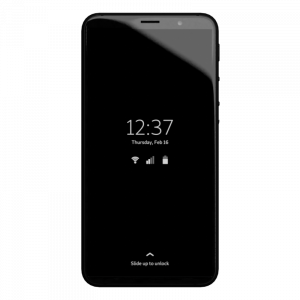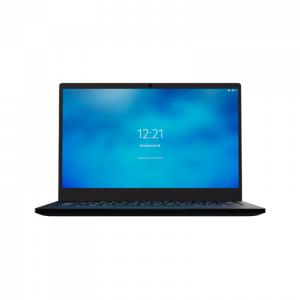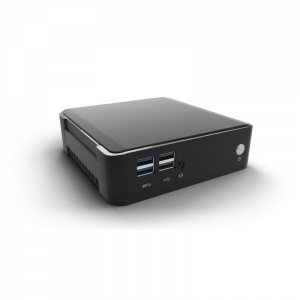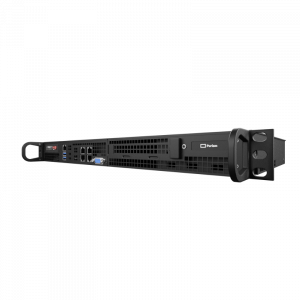The Imperative of NIST-Approved Post-Quantum Resistant Algorithms for Securing Mobile Devices
Randy Siegel
Latest posts by Randy Siegel (see all)
- Freedom of Choice vs. Oppression of Big Tech - November 6, 2024
- The Case for Free/Libre and Open-Source Software: Enhancing Security and Privacy in the Digital Age - October 22, 2024
- RIP RSA AES: The Immediate Need of Quantum-Resistant Cryptography - October 22, 2024
In the rapidly evolving landscape of cybersecurity, the advent of quantum computing presents both unprecedented opportunities and significant threats. As we stand on the brink of a quantum revolution, the need for robust, quantum-resistant cryptographic solutions has never been more urgent. This post delves into the critical importance of adopting NIST-approved post-quantum cryptographic algorithms, with a particular focus on ML-KEM (formerly known as CRYSTALS-Kyber), to secure mobile devices for data in transit and data at rest. We will also compare these advancements with the established NIST 140-2 standards, highlighting why ML-KEM represents a superior choice for future-proof security.
Note that earlier in the week (on September 23rd, 2024), Purism demonstrated our ML-KEM solution and video in the post – Quantum Safe Communication with Purism.
The post below provides additional detail and color on the evolving NIST standards and how they play alongside the legacy NIST 140-2(3) standards for Data at Rest and Data in Transit (DAR/DIT).
1. The Quantum Threat Landscape
Quantum computers leverage the principles of quantum mechanics to perform calculations at speeds unattainable by classical computers. While this technology promises breakthroughs in various fields, it also poses a significant threat to current cryptographic systems. Traditional encryption methods, such as RSA and ECC, rely on mathematical problems that quantum computers can solve exponentially faster. This vulnerability necessitates the transition to quantum-resistant algorithms to ensure the continued security of our digital infrastructure.
2. NIST’s Role in Post-Quantum Cryptography
The National Institute of Standards and Technology (NIST) has been at the forefront of developing and standardizing post-quantum cryptographic (PQC) algorithms. After a rigorous multi-year evaluation process, NIST selected several algorithms for standardization, including ML-KEM. These algorithms are designed to withstand the computational power of quantum computers, ensuring the security of data in a post-quantum world.
3. ML-KEM: A Quantum-Resistant Solution
ML-KEM, or Module-Lattice-Based Key-Encapsulation Mechanism, is one of the leading PQC algorithms selected by NIST. Its security is based on the hardness of solving the Learning With Errors (LWE) problem over module lattices, a problem considered difficult for both classical and quantum computers[1].
- Security: ML-KEM offers robust security against quantum attacks, making it a reliable choice for protecting sensitive data.
- Efficiency: Designed for performance, ML-KEM is optimized for use in resource-constrained environments like mobile devices.
- Flexibility: ML-KEM supports various parameter sets, allowing for different levels of security based on application requirements[1].
4. The Urgency for Mobile Computing
Mobile devices are ubiquitous, serving as primary tools for communication, banking, and personal data storage. The security of these devices is paramount, given their widespread use and the sensitive information they handle. Implementing NIST PQC algorithms like ML-KEM in mobile computing ensures that data remains secure even as quantum computing capabilities advance.
- Data in Transit: ML-KEM provides secure key exchange mechanisms, ensuring that data transmitted over networks remains confidential and tamper-proof.
- Data at Rest: By encrypting stored data with quantum-resistant algorithms, ML-KEM ensures that sensitive information remains protected even if a device is compromised [1].
5. Comparison with NIST 140-2
NIST 140-2, or the Federal Information Processing Standard (FIPS) 140-2, specifies the security requirements for cryptographic modules protecting sensitive but unclassified information in computer and telecommunications systems [2]. While NIST 140-2 has been instrumental in establishing baseline security standards, it does not address the unique challenges posed by quantum computing.
- Quantum Resistance: Unlike NIST 140-2, which focuses on classical cryptographic standards, ML-KEM is specifically designed to resist quantum attacks, providing a future-proof solution.
- Performance: ML-KEM is optimized for efficiency, ensuring minimal impact on device performance, which is crucial for mobile computing [1].
- Adaptability: ML-KEM’s flexible parameter sets allow for tailored security solutions, making it suitable for a wide range of applications [1].
6. Implementation Challenges and Solutions
Transitioning to PQC involves several challenges, including computational overhead, integration with existing systems, and ensuring widespread adoption. However, these challenges can be mitigated through:
- Incremental Deployment: Gradually integrating PQC algorithms into existing systems to minimize disruption.
- Optimization Techniques: Leveraging hardware acceleration and software optimizations to enhance performance.
- Awareness and Training: Educating developers and IT professionals about the importance of PQC and providing resources for implementation.
Purism and Post Quantum Resistant Cryptography
As noted earlier in the week, Purism has already implemented PQC.
Please see a link here to view our working example Quantum Safe Communication with Purism
The strongest possible security is offered by Purism, whereby secure Made in USA end user devices hold your post quantum cryptographic keys under your control. You are then in a quantum safe communication environment and can happily state “We are Quantum Safe!” With Purism you can follow the NIST encouragement and implement these new standards today.
Conclusion
The transition to NIST-approved post-quantum cryptographic algorithms, particularly ML-KEM, is not just a technological upgrade but a necessity to safeguard our digital future. As quantum computing continues to evolve, the adoption of quantum-resistant cryptographic standards will ensure that our data remains secure, protecting the integrity and privacy of information in mobile computing and beyond. By embracing these advancements, we can build a resilient and secure digital infrastructure capable of withstanding the challenges of a post-quantum world.
Purism is at the forefront of securing mobile devices and the data stored and transferred between them.
Contact sales@puri.sm to learn more about post quantum cryptographic communication and how you can become quantum safe.
[1]: NIST. (2023). Post-Quantum Cryptography Standardization. Retrieved from NIST PQC
[2]: NIST. (2002). Security Requirements for Cryptographic Modules (FIPS 140-2). Retrieved from NIST FIPS 140-2
Purism Products and Availability Chart
| Model | Status | Lead Time | ||
|---|---|---|---|---|
 | Librem Key (Made in USA) | In Stock ($59+) | 10 business days | |
 | Liberty Phone (Made in USA Electronics) | In Stock ($1,999+) 4GB/128GB | Shipping before Friday December 19th, 2025 | |
 | Librem 5 | In Stock ($799+) 3GB/32GB | Shipping before Friday December 19th, 2025 | |
 | Librem 11 | In Stock ($999+) 8GB/1TB | 10 business days | |
 | Librem 14 | Out of stock | New Version in Development | |
 | Librem Mini | Out of stock | New Version in Development | |
 | Librem Server | In Stock ($2,999+) | 45 business days | |
 | Librem PQC Encryptor | Available Now, contact sales@puri.sm | 90 business days | |
 | Librem PQC Comms Server | Available Now, contact sales@puri.sm | 90 business days |
Recent Posts
Related Content
- Purism Liberty Phone Exists vs. Delayed T1 Phone
- Librem PQC Encryptor: Future‑Proofing Against Both SS7 and Quantum
- Sound Recorder App Now Available
- AWS Outage, Purism’s Answer is clear: Decentralize, Localize, and Empower Users to Own Their Digital Lives
- Drawing App Now Available


